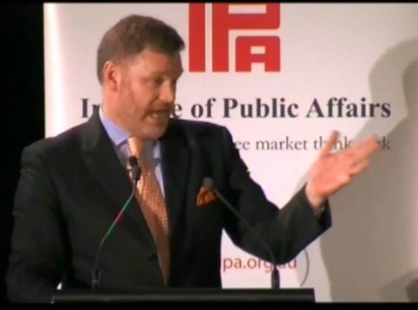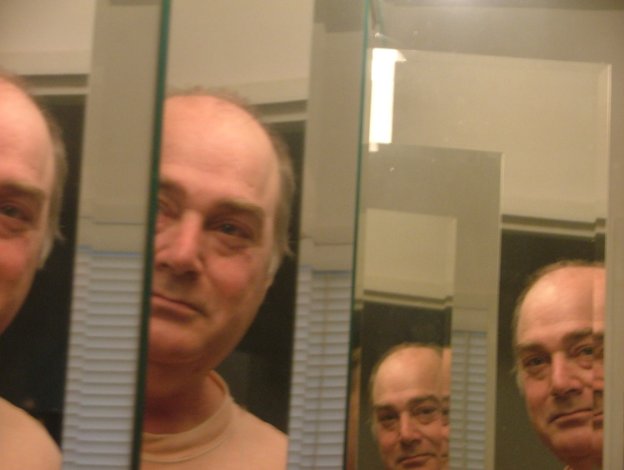Would it strike the reader as somewhat odd if a defendant in court proceedings were to be kept in the dark about the verdict in his case, and that he would learn about the decision through the media, over a month after the decision were handed down? Would the reader think it peculiar that that verdict contained a statement claiming the defendant did not provide a response to the courts final holding – as if the defendant were afforded the opportunity but refused to do so? This is exactly what has recently happened in Australia. Though this did not occur in court proceedings per se, the above describes the gross procedural unfairness with which Australia’s primary pro-marriage lobby group, Marriage Alliance, has been treated by the country’ Advertising Standards Bureau.
 In February SydneyTrads reported about Marriage Alliance‘s controversial use of the “Rainbow Noose” meme on its FaceBook page. The group was briefly suspended from FaceBook for alleged violations of its terms of use. While the suspension itself was a minor inconvenience to its ability to communicate with supporters online, the campaign to sensor any effective push-back against the advocates of same-sex “marriage” appears to continues unabated.
In February SydneyTrads reported about Marriage Alliance‘s controversial use of the “Rainbow Noose” meme on its FaceBook page. The group was briefly suspended from FaceBook for alleged violations of its terms of use. While the suspension itself was a minor inconvenience to its ability to communicate with supporters online, the campaign to sensor any effective push-back against the advocates of same-sex “marriage” appears to continues unabated.
The latest attempt to intimidate dissenting opinions has drawn in the country’s peak body that deals with advertisement media. The Advertising Standards Buereau’s webpage describes the body as a “secretariat for the Advertising Standards Board and the Advertising Claims Board. The Bureau, based in Canberra, works to promote the work of the Boards and the role of the Advertising Standards Bureau in the system of advertising self-regulation. The Bureau is governed by a Board of Directors.” The Broad further states that it places “the highest priority on preserving the integrity of the advertising self-regulation system.”
The Bureau and the Board are not a court – however they do engage in administrative proceedings that could be described as quasi-judicial in nature. Members of the public who believe that an advertisement has breached some provision of the AANA Advertiser Code of Ethics can make complaints to the Board, and the Respondent is then invited to submit a defense. The Board makes a determination, which is then provided to the Respondent for comment before the final decision is published on the Bureau’s website.
The Bureau, which appears to have taken a complaint against the meme from a member of the public, has dealt with the “rainbow noose” controversy in a way that can hardly be described as “preserving the integrity of the advertising self-regulation system.” A final determination has been made and published. However, according to statements Marriage Alliance has made on social media, the organisation first became aware of the Board’s decision on 11 April, although the decision seems to have been delivered on 9 March of this year. The pro-family group was not contacted by the Board, nor was it asked to provide a comment with respect to the decision, yet the published decision states that:
THE ADVERTISER’S RESPONSE TO DETERMINATION
The advertiser has not provided a response to the Board’s determination.
Why is it that the Board, which is funded by the taxpayer, can commit such an egregious violation of procedural fairness? The false impression given by its holding is that all parties were afforded their right to be heard. The decision misleads the public and in doing so the Board has failed to conduct itself according to its own standards of best practice. While the decision itself is not signed, the Bureau’s websites lists the following individuals as members of its Board of Directors:
Ian Alwill (Chair)
Principal, Alwill AssociatesHayden Hills
CEO, KU Children’s ServicesVictoria Marles
Chief Executive Officer – Trust for Nature, VictoriaJohn McLaren
Managing Director, Black Sheep AdvertisingAndrew Caie
General Manager, Marketing, SubaruDavid Scribner
Chief Executive, Virgin Mobile Australia
A closer inspection of the decision may shed some light on why the Board may have tried to avoid additional comment from Marriage Alliance. An anonymous journalist writing at Mumbrella, an online marketing and media news blog describes the decision as a “banning” of the controversial image. Naturally, the first question that comes to mind is just how can an organisation like the Advertising Standards Bureau “ban” an online meme? Furthermore, if the meme is an expression of political communication, how can the Bureau “ban”, censor or interfere with it in any way? Marriage Alliance‘s response to the original complaint was quite clear on this point, challenging both the Board’s jurisdiction to hear the complaint itself and its powers make any adverse determination in respect of political communication. The lobby group’s initial submissions are worth citing verbatim:
You will be aware that our organisation is preparing for, and engaging in the preliminary stages of a political campaign concerning, inter alia, the proposed alterations to the definition of “marriage” and “family” throughout the Commonwealth (herein referred to as the same-sex-marriage or “SSM” campaign). This is a highly contentious political debate that has attracted a great deal of press and commentary.
On the most recent advice received from the Australian Electoral Commission, as a “Third Party Campaigner” we may be subject to the mandatory reporting provisions of the Australian Electoral Act 1918 (Cth). Accordingly, it is our view that our communications fall under the exclusion of “political advertising” as per the information on your website.
We therefore question the jurisdiction of the Advertising Standards Bureau in this matter but have decided to provide this response as a sign of good faith, on a without prejudice and no-admissions basis, and with all rights reserved.
Above: the offending tweet.
[…] Notwithstanding the matters raised […] above, the Image is not an “advertisement”. It is not promoting a product or a service, nor is it tendering for any business or commercial enterprise of any sort. No money has been paid for its publication and no revenue has been generated by its publication. The Image is akin to an online “meme” which is a mere opinion represented in visual form. This particular Image’s dominant purpose is political and connected to a politically orientated campaign. That campaign is presently focused on the opposition to the proposed legalisation of SSM, however the campaign is also couched in a broader and ongoing public debate concerning bioethics and sexual morality issues, as well as how free discussion of these issues is being stifled. […]
The Federal Constitution provides an implied protection over “communication on matters of government and politics” [Lang (1997) 189 CLR 520, 558-559]. Constitutionally protected political communication would also include “communication that influences attitudes towards public issues” such as, inter alia, “questions of appropriate parenting”, “use of reproductive technologies generally”, “questions of religion, moral philosophy, history, medical science and sociology” [Stone, A., (2001) No. 2 Melbourne Univ. Law R. 25 1, 18]. Furthermore, “political discussion […] refers to all speech relevant to the development of public opinion on the whole range of issues which an intelligent citizen should think about” [Theophanus (1994) 182 CLR 104, 124].
We argue that matters pertaining to the scope and extend of political correctness within debates concerning the SSM campaign would fall under the penumbra of the above. It is further argued that a political opinion concerning issues ancillary or consequent to the legislation of SSM, especially if that opinion goes to the question of acceptable discourse on related issues (such as freedom of speech and conscience in the workplace) – all of these fall within the definition of “political discussion”. Accordingly, communication that falls within this penumbra is protected under the implied Constitutional guarantee.
Moreover, “[t]he character of the communication ought to be considered political, regardless of its personalised content and its likely incapacity to impact the wider political debate” [Jones, E., (2004) 36 Syd. Law Rev. 169, 179]. Furthermore, the protection afforded to the political communication will not be interfered with “no matter how undesirable these facts might be to a given person or minority group” [Zimmerman, A., (2013) Brigh. Young Univ. Law Rev. 457, 500; Fletcher (2005) VCAT para 7; […]]. Indeed, “insults are a legitimate part of the political discussion protected by the Constitution [and] have been employed in political communication since the time of Demosthenes” [Coleman (2004) 220 CLR 1, 54, 78]. Accordingly, “the implied freedom has been found to protect insults, abuse, and ridicule made in the process of political communication” [Zimmerman, A., . at 498; also: Arony, N., (2006) F.L.R. 287, 312].
While the Image does not seek or intend to “insult”, it appears to have offended the Complainant. Be that as it may, in light of the political nature of the communication inherent in the Image, and the Constitutionally implied protection of political communication as defined above, it is respectfully submitted to the Board that the Image is protected as political communication under the implied freedom per the Federal Constitution and relevant High Court authority.
Seems like a robust argument against the Bureau’s authority to intervene in the matter. In fact, the only referencing to “banning” was contained in an annexure to the Marriage Alliance response to the original complaint, which is incorporated into the Bureau’s determination. That annexure was a transcript of a short television programme, Media Watch which was broadcast on the ABC on 17 August 2015 (See video: Episode 29). In an ironic twist, that episode concerned the way in which Marriage Alliance has itself been “banned” from major television and radio networks. The pro-family lobby group included this transcript in its response to illustrate how it — and not its critics — is being unfairly treated in the ongoing same-sex “marriage” debate in Australia. That the term “banned” is used by Mumbrella, as a description of the Bureau’s treatment of the offending image, demonstrates sloppy journalism at best. Indeed, the Advertising Standards Bureau has no actual powers to enforce its decisions, primarily being a body that assists the advertising media industry in self-regulating under the Advertiser’s Code.
Nevertheless, the Advertising Standards Bureau acknowledged Marriage Alliance’s comments about jurisdiction and the Constitutionally implied guarantee of political communication. In so doing, however, it appears to have separated the image from the text, and made its adjudication on the basis of the image only. Such a separation seems artificial and illogical given the centrality of the image and the context in which it was used. In the determination, “[t]he Board noted that same-sex marriage is a current political concern for the Australian community and considered that its consideration of the current complaint would be limited to the image used and not to the accompanying text or political viewpoint/message.” This, of course, is absurd. It is a well known and established fact that non-text or non-vocal speech is considered a form of communication by present community standards, such as burning the flag. On it face, the Board’s attempt at separating the image from the political message is an unconvincing attempt to ground its jurisdiction. Under the circumstances, it is hardly surprising that they would not want Marriage Aliance to respond to this on the record.
– SydneyTrads Editors







Must be a very effective campaign image to attract such a vehement response.